The Trek Roscoe 24 sports 2.8in fat tyres, a 1x drivetrain and a wide-range cassette, sloping top tube, note how the rear brake calliper is tucked into the frame to help prevent damage from laying the bike down.
- Brand: Trek
- Product: Roscoe 24
- Price: £575.00
- From: Trek Bikes
- Review by: Barney
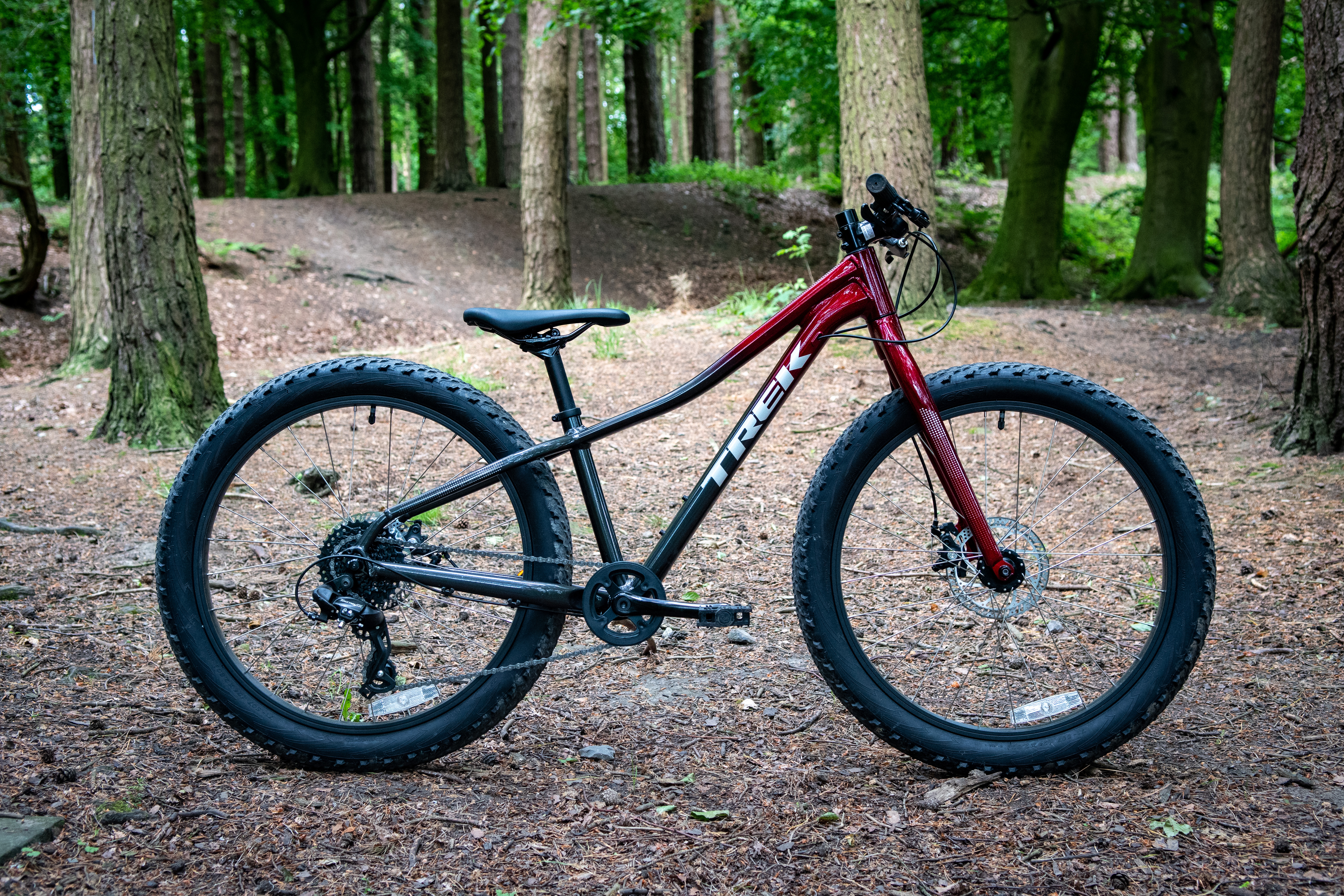
Children are fickle creatures. Just when you think that you can just buy one bike and hand it down when necessary, that becomes a problem – one of them doesn’t grow as fast as you thought; the other grows too much; one of them has become sufficiently gung-ho that bikes last a matter of weeks, or end up upended in the bottom of ponds, or tied to rope swings… the inventive ways that kids can surprise you is a constant source of delight/dismay. Still, it occasionally becomes necessary to make yet another foray in to the world of kids’ bikes.
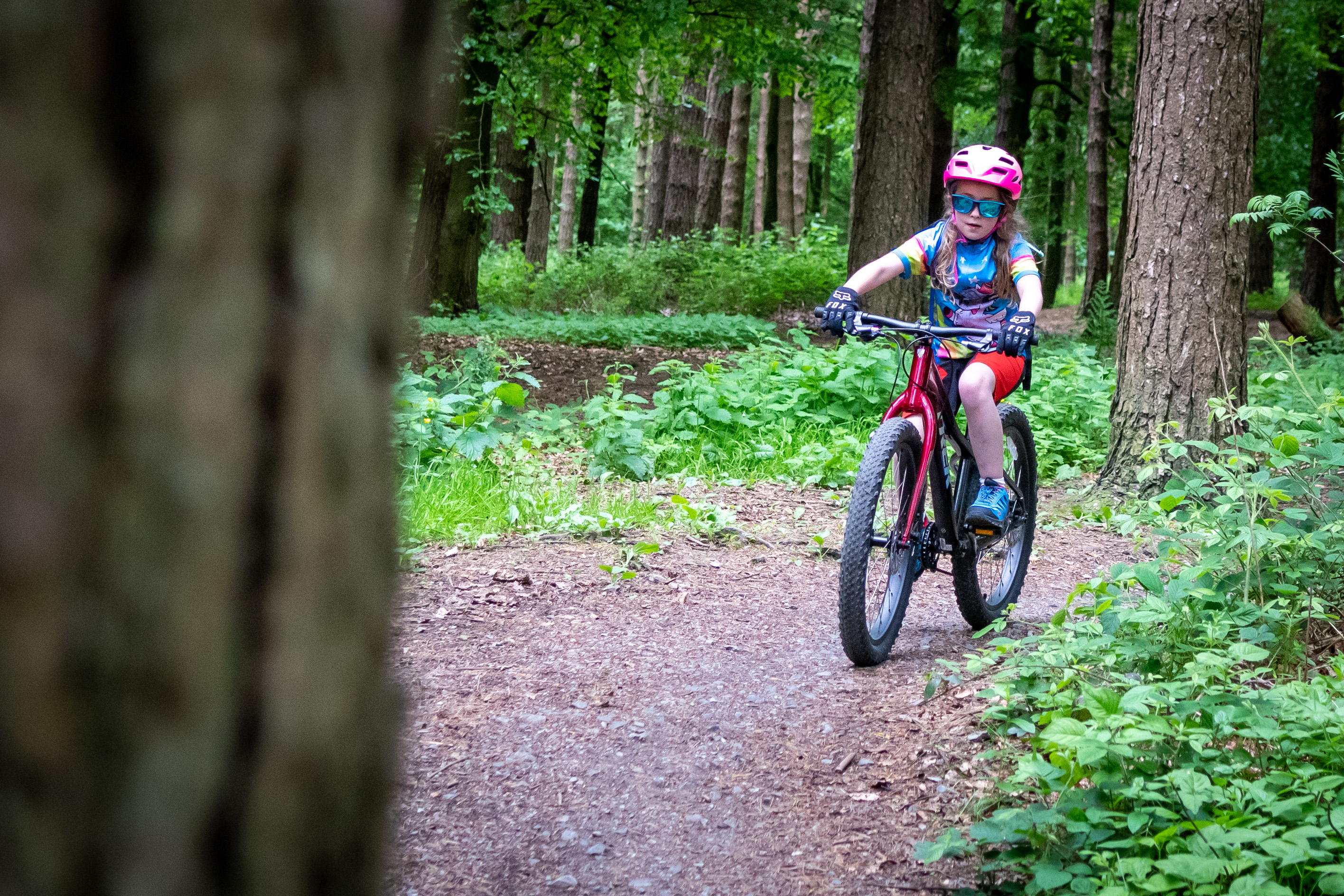
It will come as no surprise to learn that Wisconsin-based cycling behemoth Trek has a range of kids bikes to suit all tastes. The Roscoe 24 takes its name from the more grown-up Roscoe bikes in the Trek range, but apparently ‘designed from the ground up for kids’. Well alrighty then. Let’s find out what that means in Treksville.
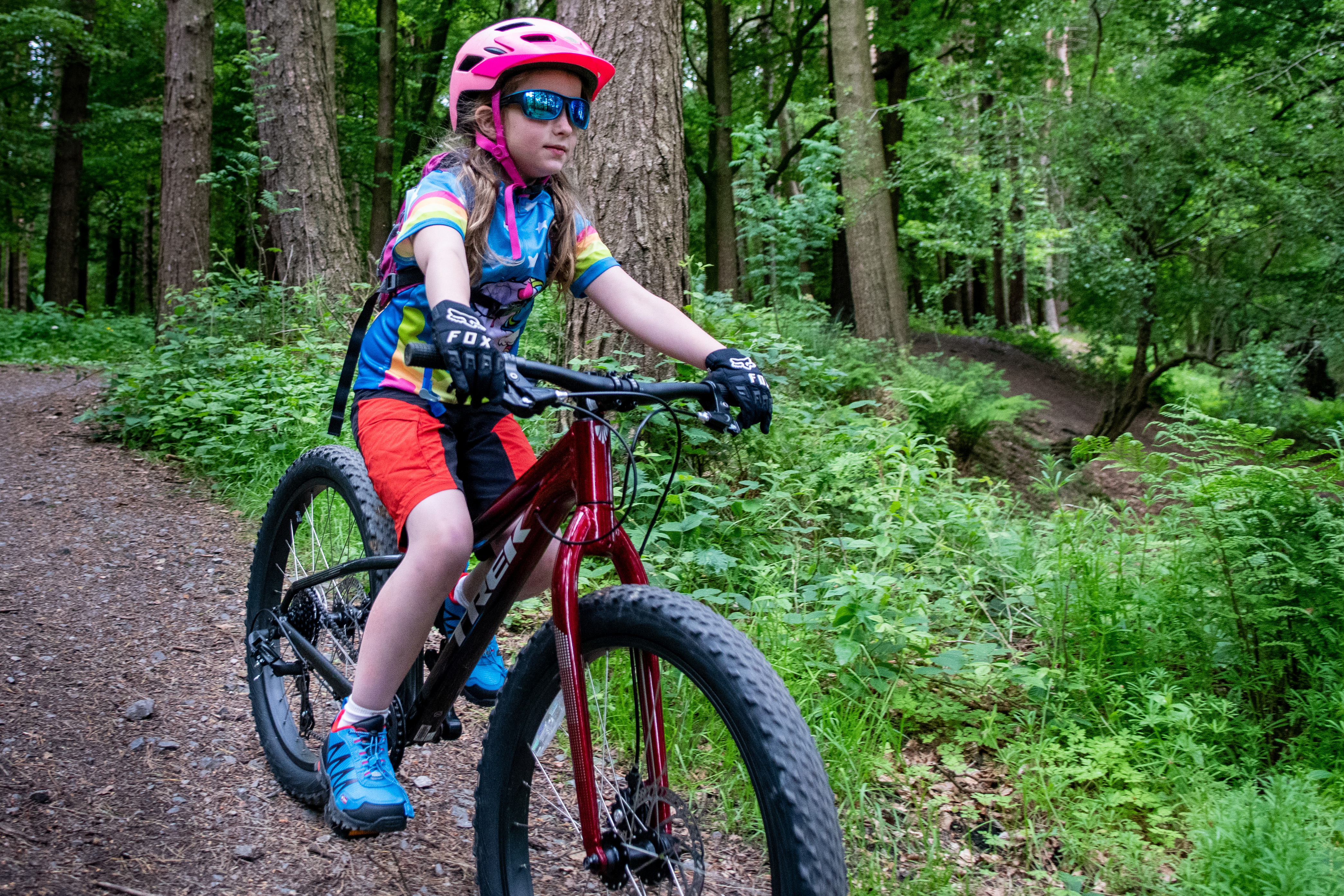
It’s a chonkin’
First up, the bike is pretty cool looking. Suave red and black. Neat profile, fully rigid, with some pretty chonkin’ tyres. The frame is made from “Alpha” aluminium, apparently. According to Trek, this is their ‘most advanced aluminium ever’. From what I can gather this is less about the alloy itself, and more about the hydro forming and shaping of the tubes to yield the best profiles with the most comfort and the lightest weight. Which is nice. It’s certainly sleek.
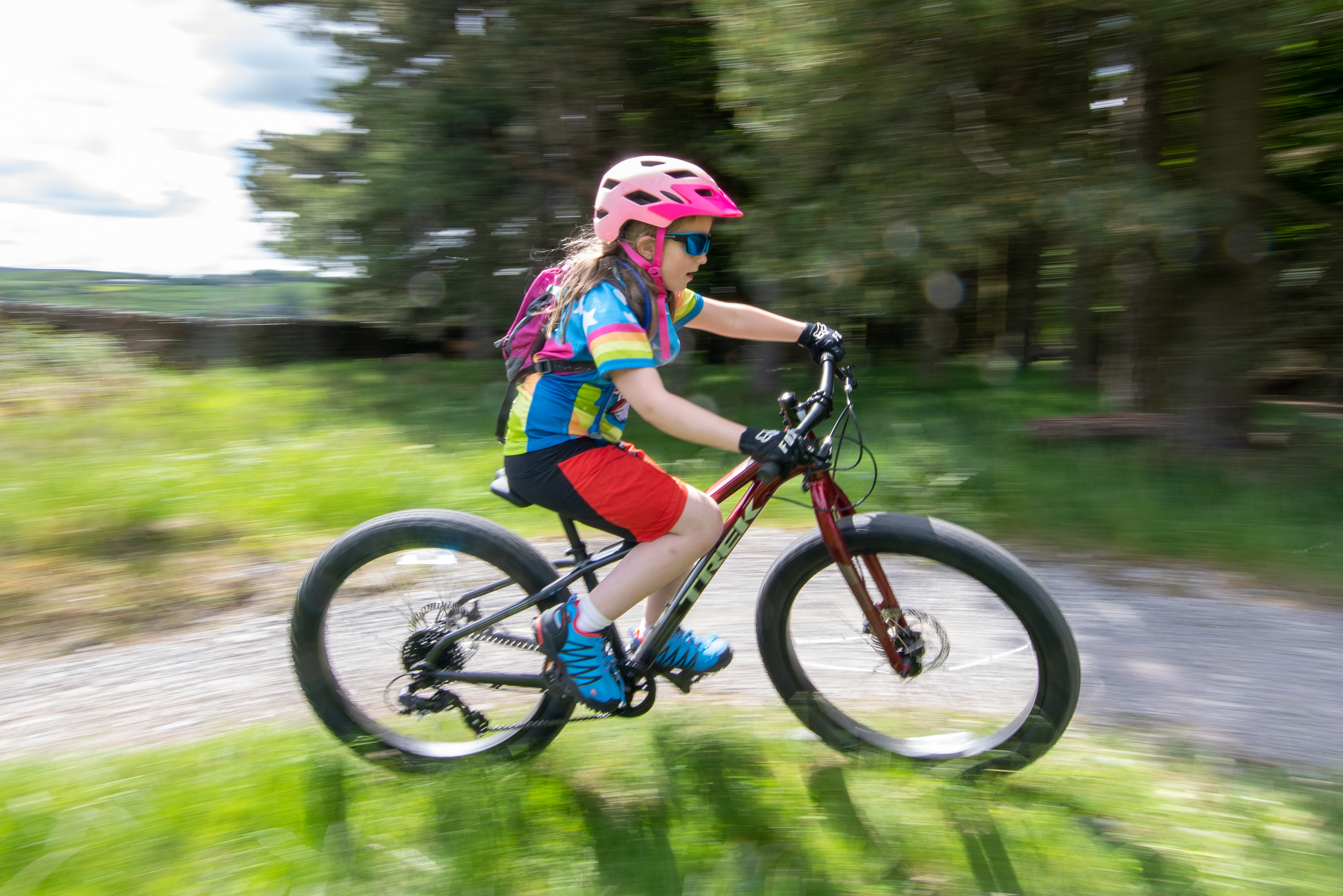
There’s a gap between the bottom bracket and the downtube which allows for semi-internal hose routing to maintain those lines. The fork is also alloy, with lines that flow smoothly from the frame down to the axle. The hub is a formula 100mm QR number, which is lashed via 28 spokes to an enormously wide (comparatively) alloy rim and Chen Shin (me neither) 24×2.8 tyres. It’s the same story at the back, except the rear hub is a boost 141 model. For those unfamiliar (as I was) this boils down to a regular Boost rear hub – except that instead of a 12mm thru-axle, it uses QR end caps.
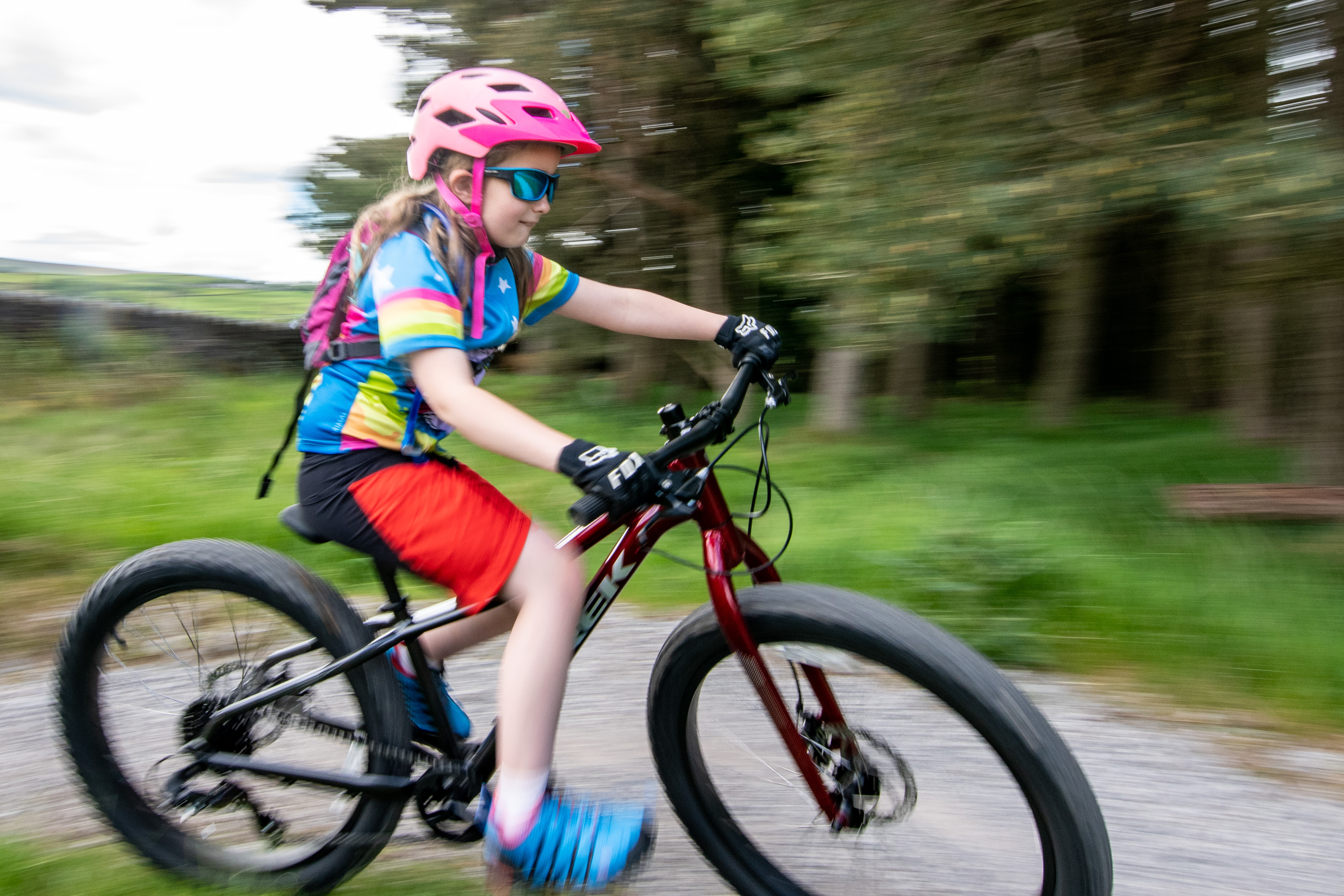
Where’s the drop?
As might be presumed on a kids bike with all of the tyre wideness, the bottom bracket is a special wide number too – an old-school cup and cone job (don’t believe Trek’s website that says it’s a cartridge) with a whopping 131mm tapered axle, on which is firmly thrust some 152mm cranks with a 28t chainring. The BB drop is 58mm, which is pretty substantial on a kids’ bike – more on that later.
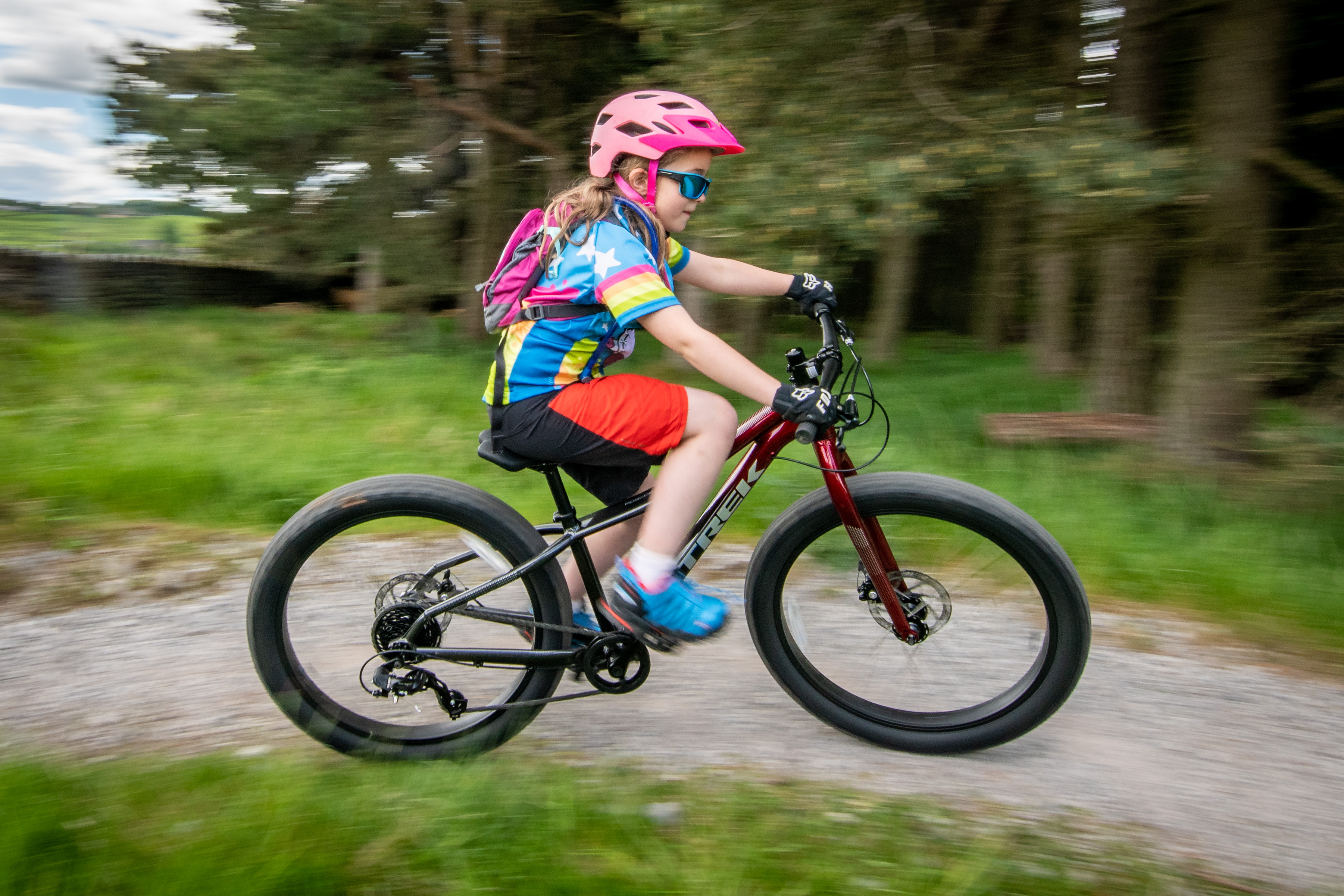
The chain is hauled around an 8 speed 11-34 tooth cassette by a Shimano Tourney rear mech controlled by an Altus shifter. Stopping is handled by some Tektro MD-M280 mechanical discs and 160mm rotors, controlled by small throw levers.
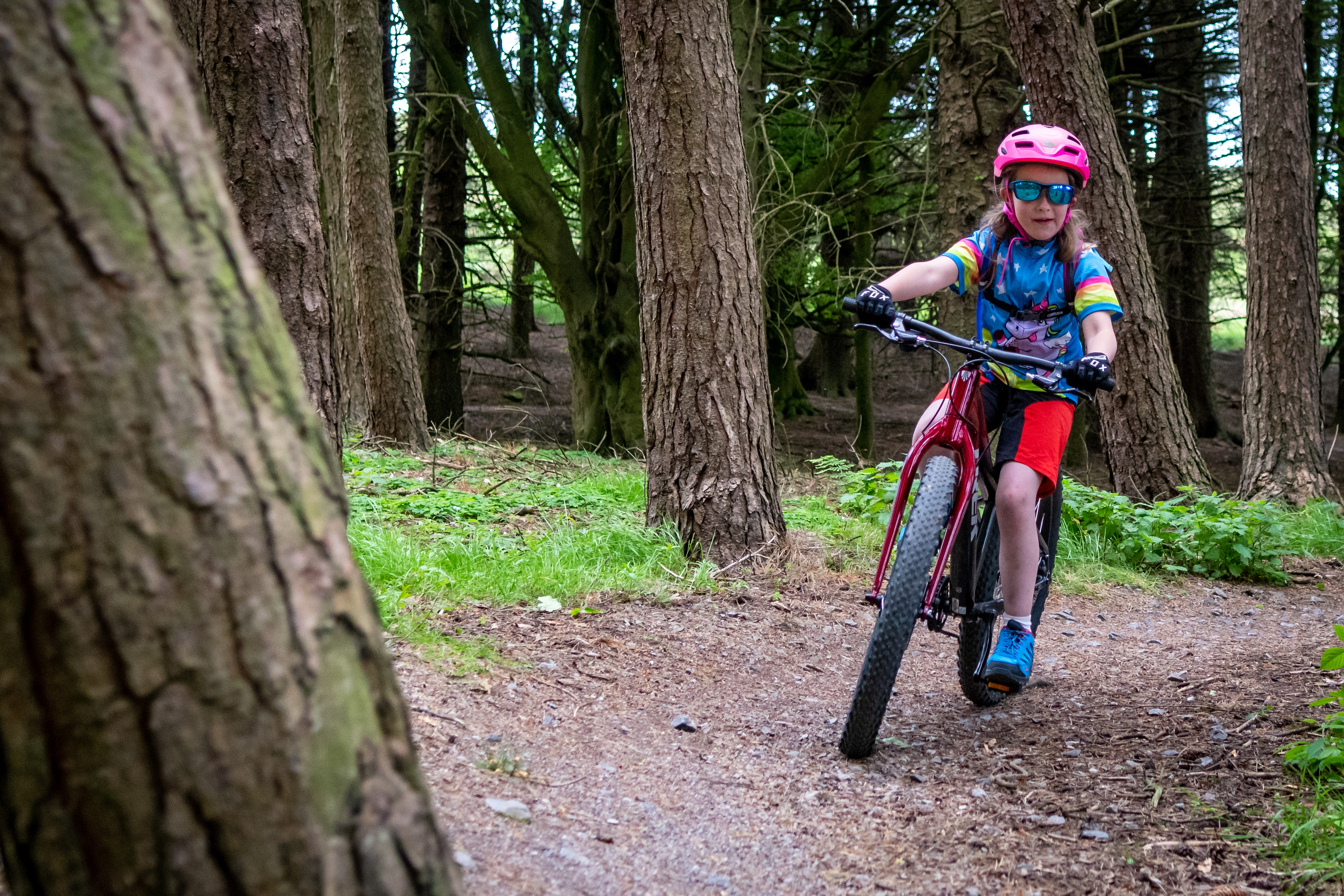
The rest of the kit has a lot of ‘Bontrager’ on it – stem, seat post and bars are all from Keith’s stash, with kidsized saddle, pedals and grips providing the contact points. Over all, a solid package. But, dear reader, how does it ride? We despatched our most unicorn-festooned 7 year-old tester, Alis Marsh, on a mission to find out.

The ride
It’s funny how some kids (people) can be immune to the vagaries of geometry, whereas others will be hyper-alert to every degree of change. Alis’ old bike, a hand-me-down from her big sister, was a case in point. Eliza loved it in all its aspects (until a disastrous trip to Llandegla proved just how big she was for it), but when we handed it down to Alis, she complained of feeling perched on top of the bike, and of not feeling in control. A swift investigation of geometry yielded some possible clues – the cranks weren’t long enough for her, at 140mm, and nor was the BB drop at 15mm. Although these are not uncommon geo figures on kids bikes at all, Alis struggled to get much power down thanks to the short cranks, which was amplified by the very short BB drop. And thanks to this last, she only felt safe with the saddle slammed, which gave her practically no leverage, and a feeling of pitching over the bars.
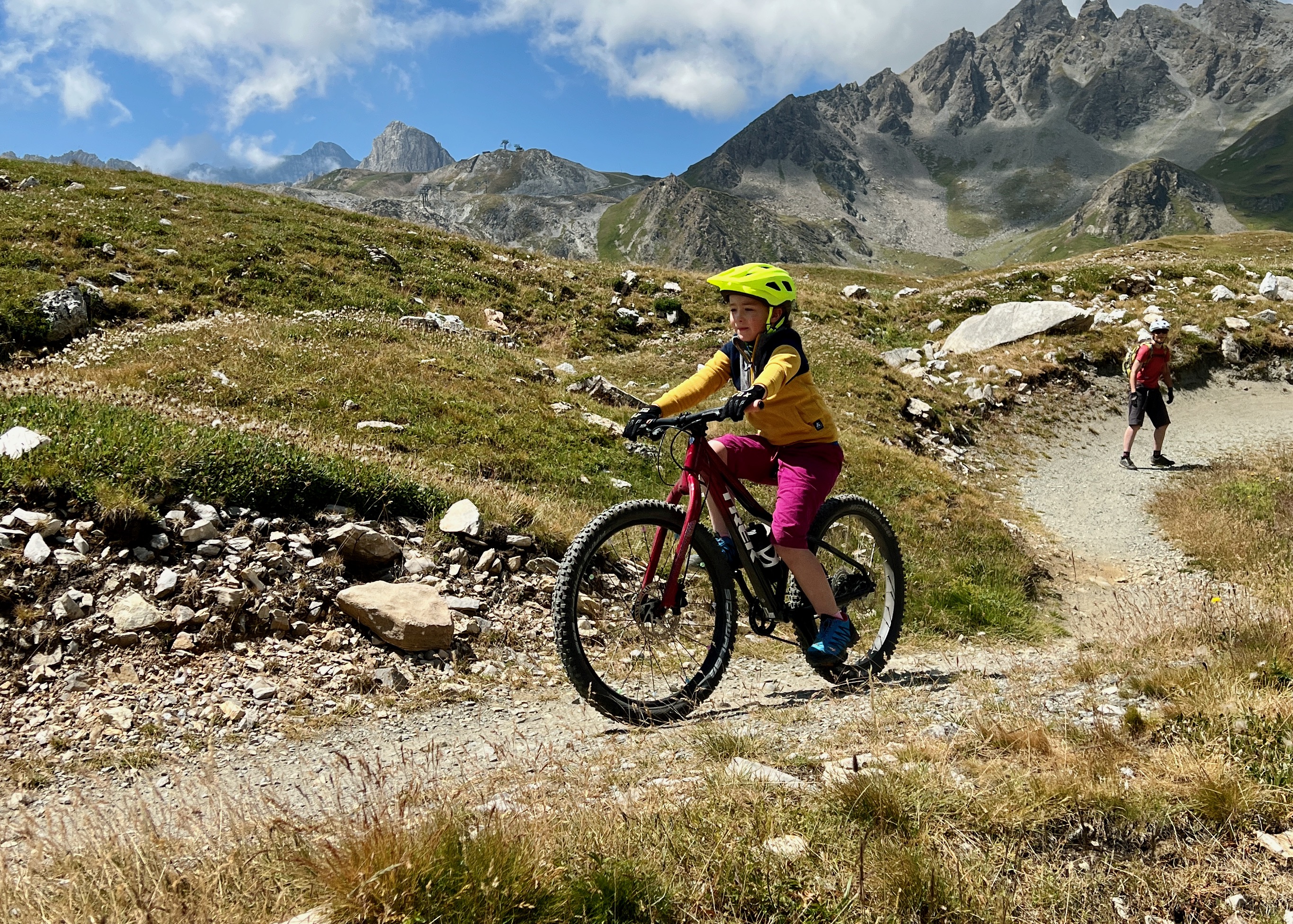
Perfect geometry
Here, then, the Roscoe is absolutely perfect. The longer 152mm cranks let her put the power down more effectively, and the substantial bb drop (58mm) lets her climb on with ease, and run the saddle at a reasonable height. Comfortable pedalling, and a feeling of being in the bike rather than on it, coupled with a decreased chance of flying over the bars are the result. This is a massive win in my book.
Cush confidence
The lack of a fork on lumpier terrain is not the problem is might be thanks to those enormous tyres, although the shallow tread isn’t ideal in the mud. The tyres are perfect for dry conditions, though, and the whole bike is geared up for playing around on fairly easy tracks and paths. For soggier parts of the test we swapped the tyres out for some burlier Hans Dampf 24in tyres with a 2.4in carcass, which worked much better in the glop and during faster cornering. This slightly narrower tyre carcass also served to lower the BB even more for increased slithery confidence, and although I was worried about pedal strikes, this has been ill-founded; Alis has had no issues in this regard whatsoever.
I admit I’m generally not completely sold on tyres as large as 2.8in for kids’ bikes. I understand the appeal from a comfort perspective (and the cartoony looks also help) but I suspect the boost QR hub and the ultra-wide bottom bracket – which both worked absolutely perfectly, I should say – were only there to increase the clearances for the tyres. A slightly narrower tyre (such as the 2.4s I added) would still give the requisite Cush, and further might let Trek get away with a cartridge bottom bracket and a more conventional 135mm rear hub. But I’m not an engineer, so I eagerly await your angry letters pointing out the error of my ways. I also initially wondered whether such chunky tyres might also be heavy, so I weighed them. They’re a shade over 700g each – not too shabby at all, considering I’m running tyres twice that weight on my full suss.
Gear up
The gearing is somewhat agricultural (there are cheaper bikes available with better spec., at least on paper) but performed flawlessly. The gears were easy enough to select with small hands, although if I was being nit-picky the throw when shifting up was a little high. Alis had to use her wrist to push the lever enough to shift gears, but she swiftly because used to it. The range is pretty good, too. Alis finds she can winch up most things by just sitting down and flailing away – her preferred style (and mine, if I’m honest).
Brake down
The only real issue we found was with the Tektro mechanical brakes. Even after allowing a very generous bedding in period, they were lacking in power. I attempted to move things along by trying to ride the Roscoe down some inclines myself and hauling on the anchors, but they resolutely refused to improve. The return spring you work against to activate them also seems to be rather stiff. Couple that with the springs in the levers, and it becomes tough to stop in good time on anything even remotely steep. They’re fine with enough forward planning and on nothing too vertiginous, but forward planning isn’t exactly high on the list of the average 7 year old’s attributes. Would different pads help, maybe? Less stiff return springs? Better yet, a hydraulic upgrade would be a much better bet for little hands. I eventually swapped the brakes on our test bike for some Tektro hydraulics I had knocking around, and they were a revelation. Alis was immediately more confident with her braking in pretty much all situations (except berms. She still hates berms).
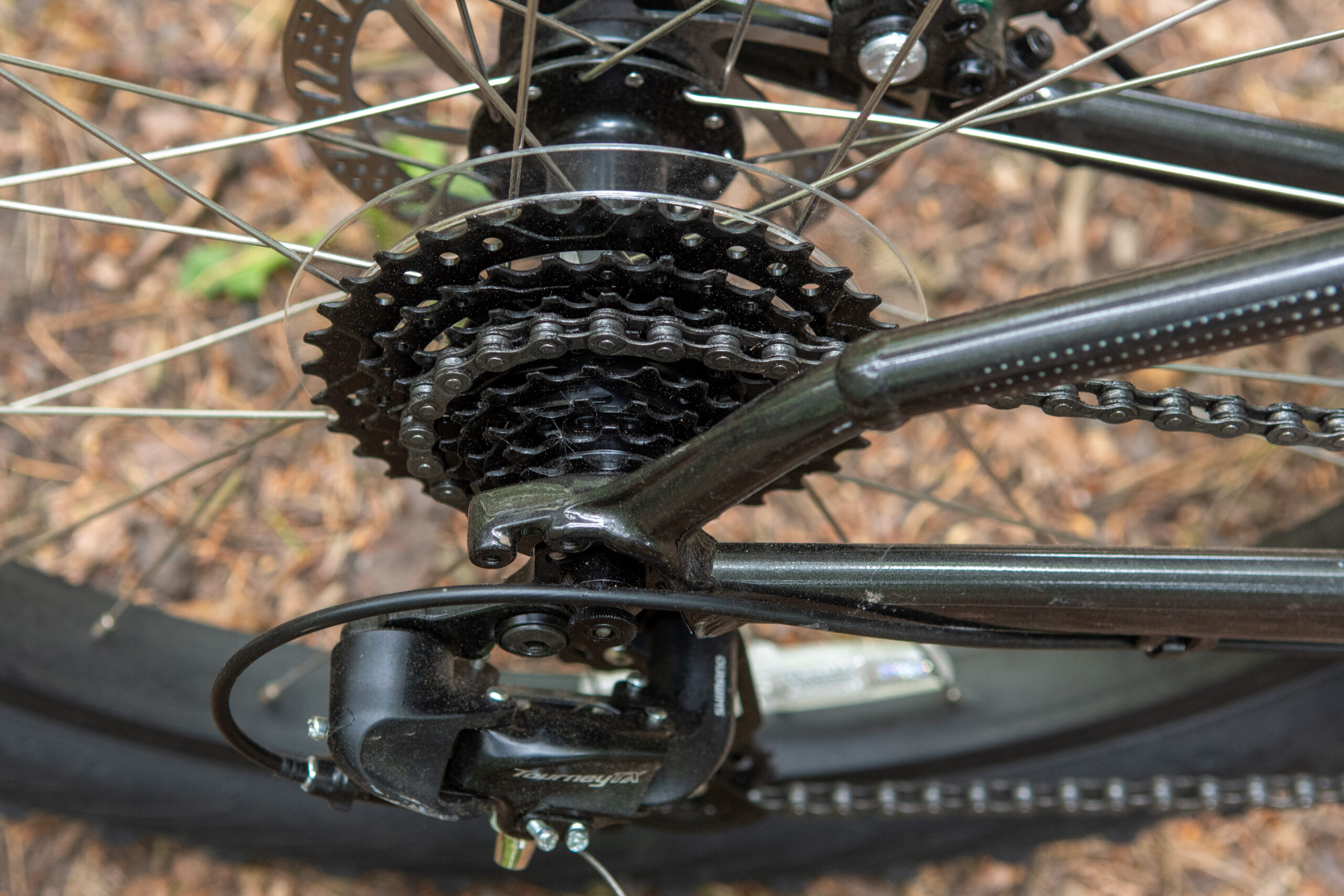
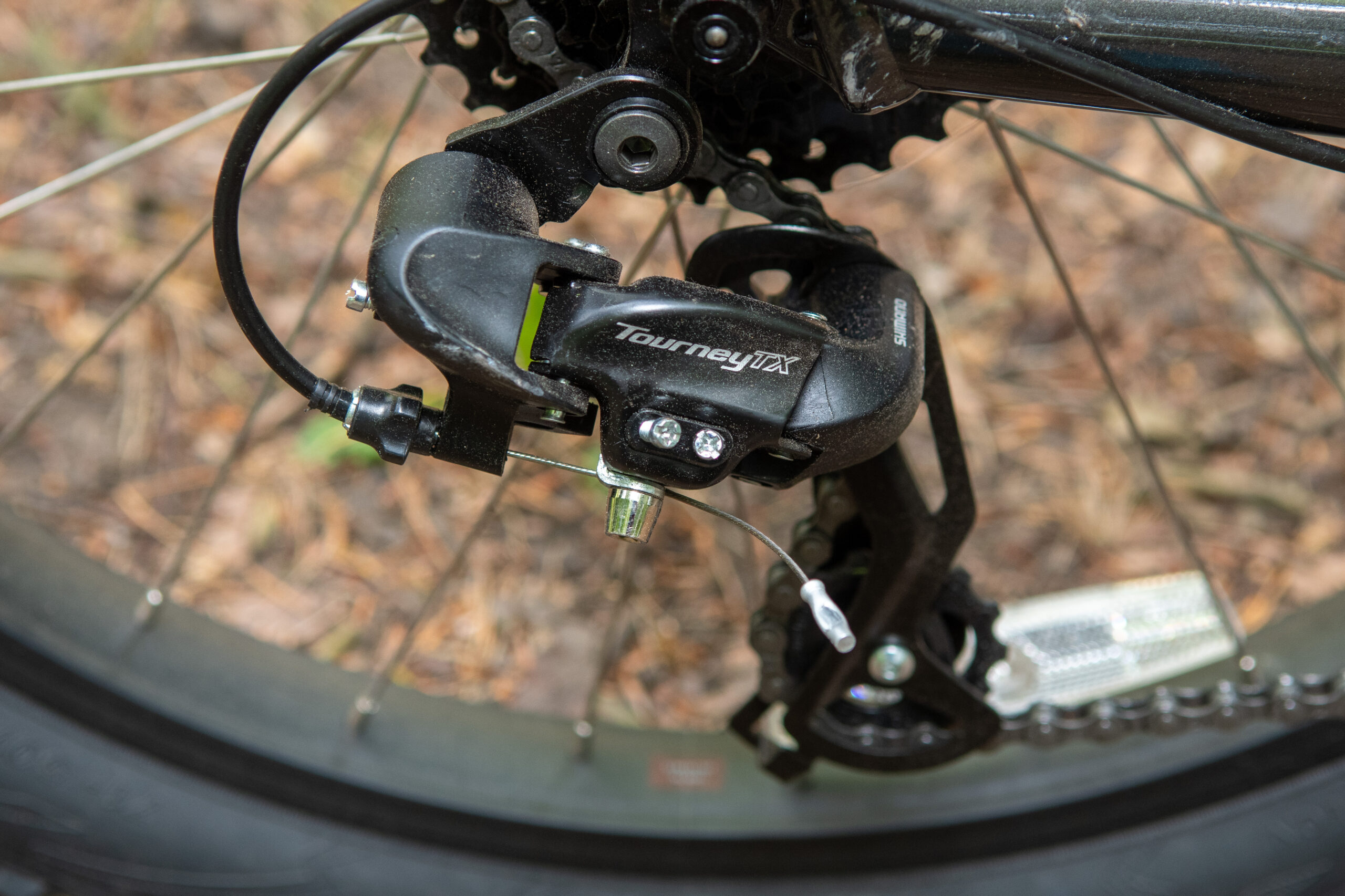
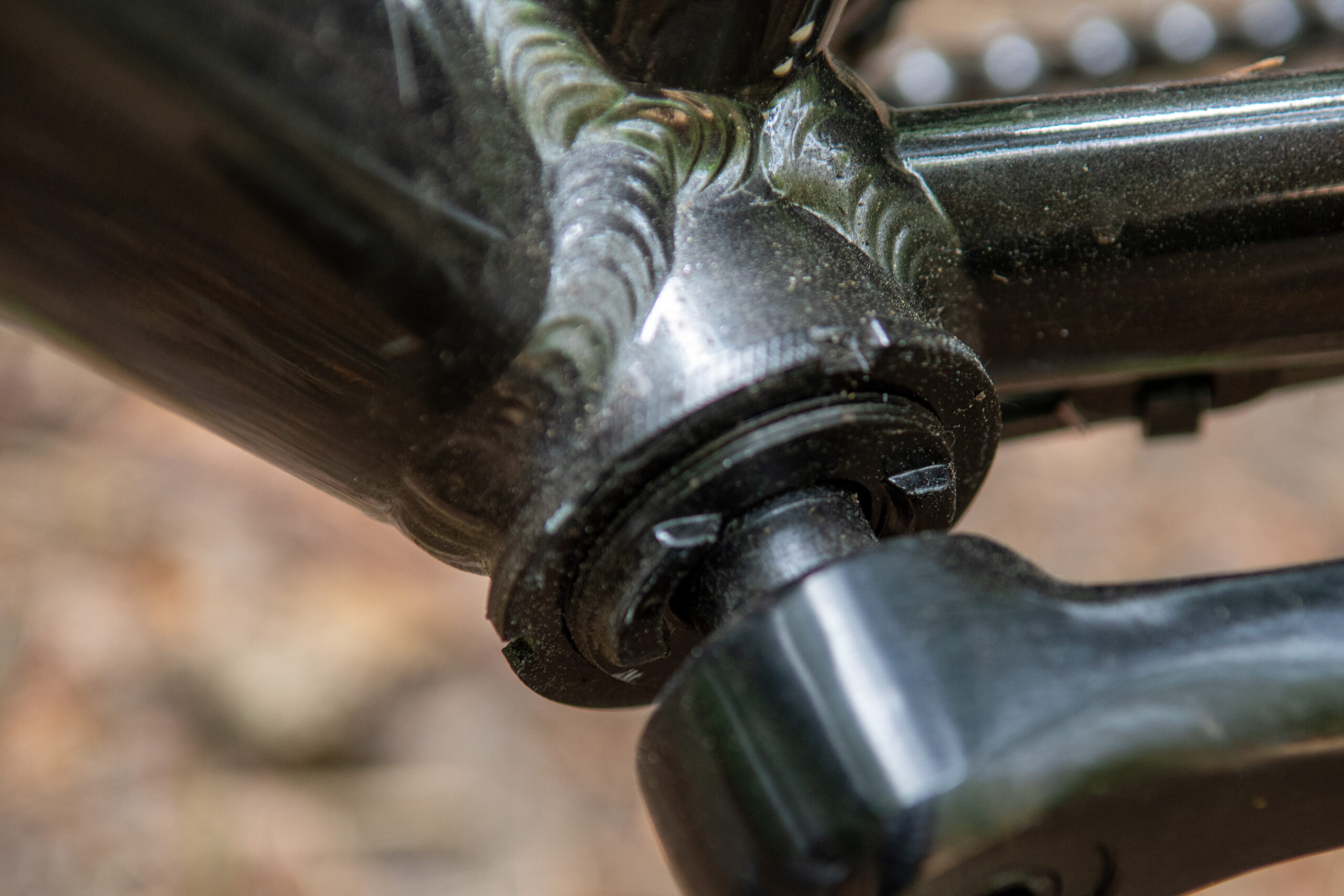
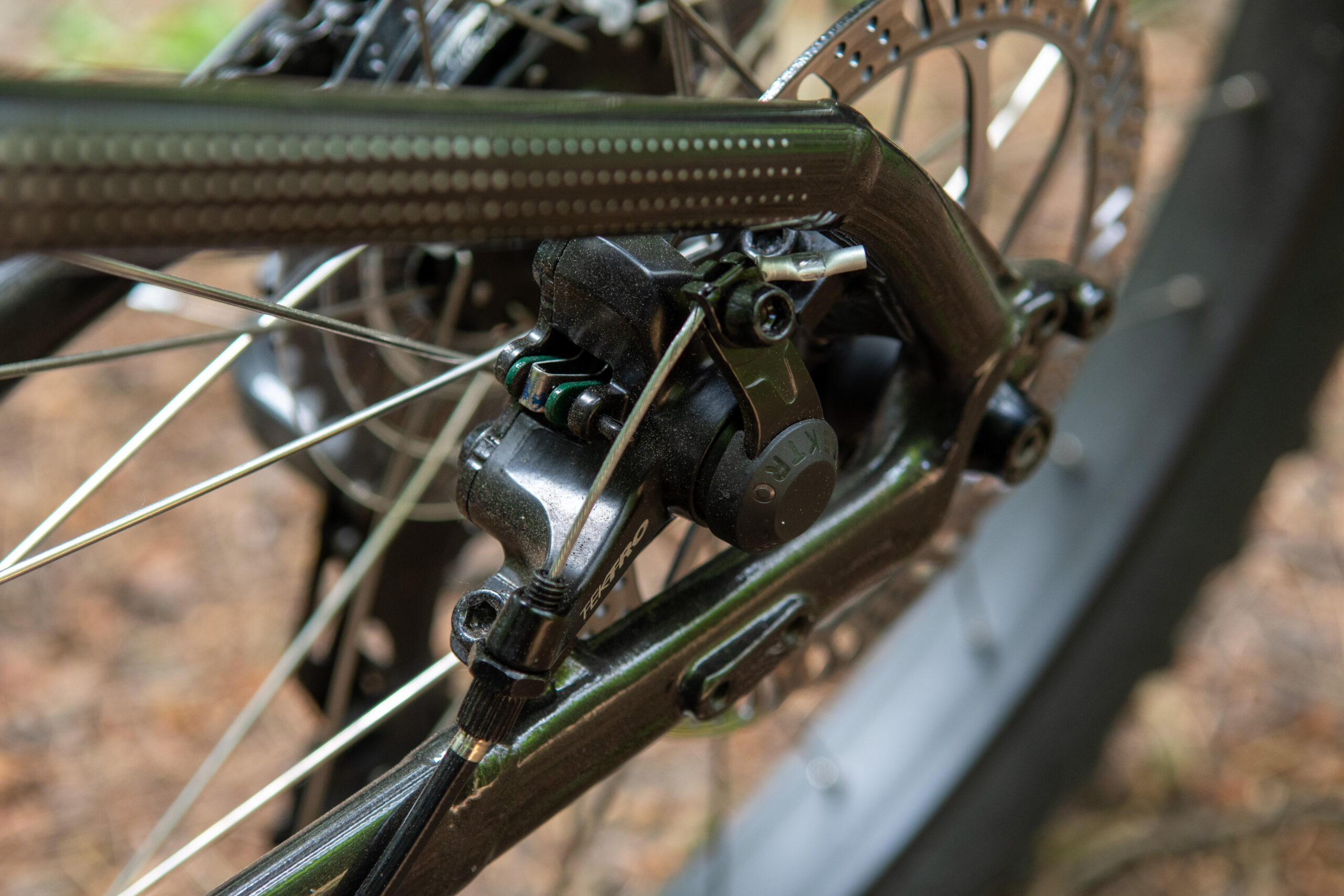
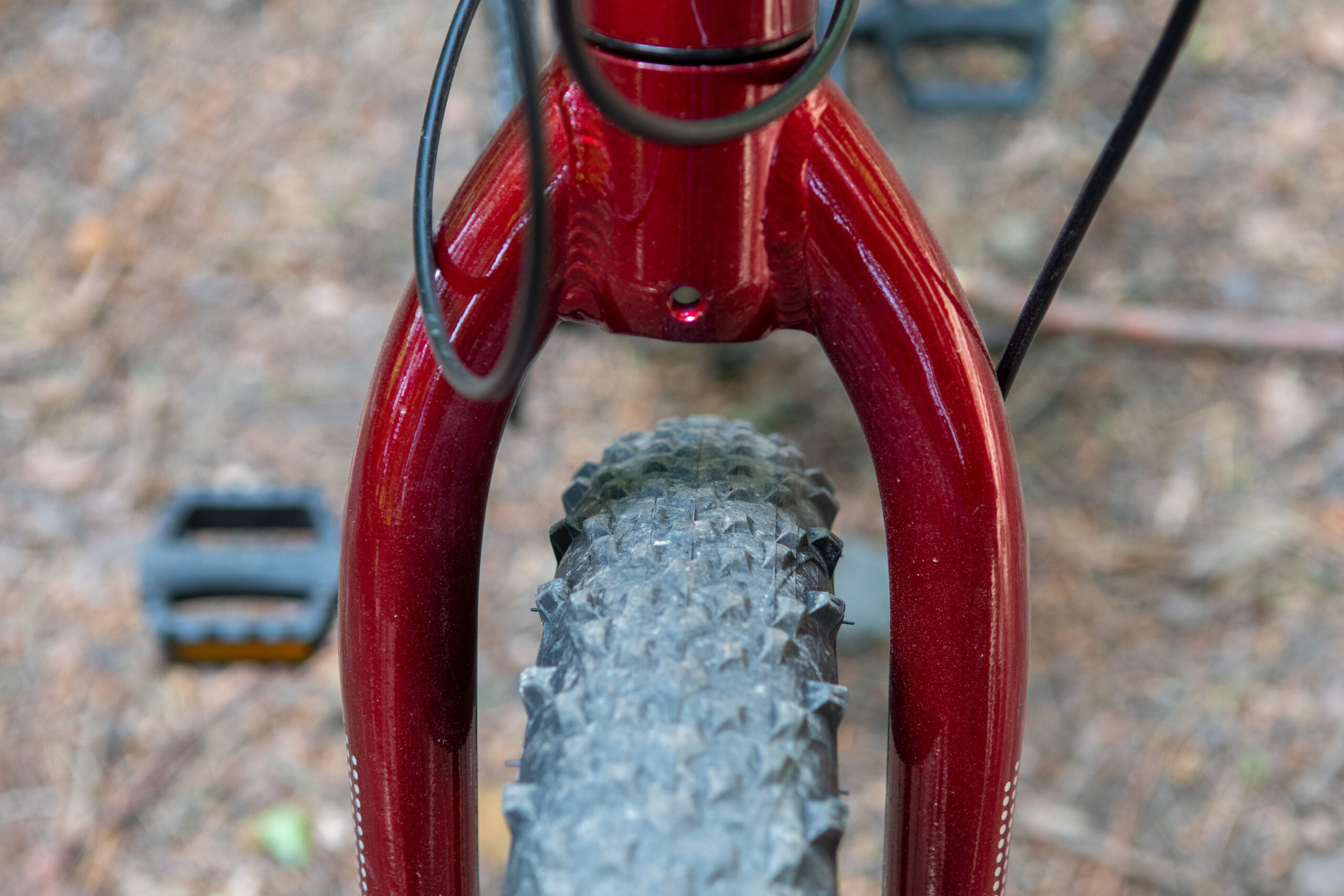

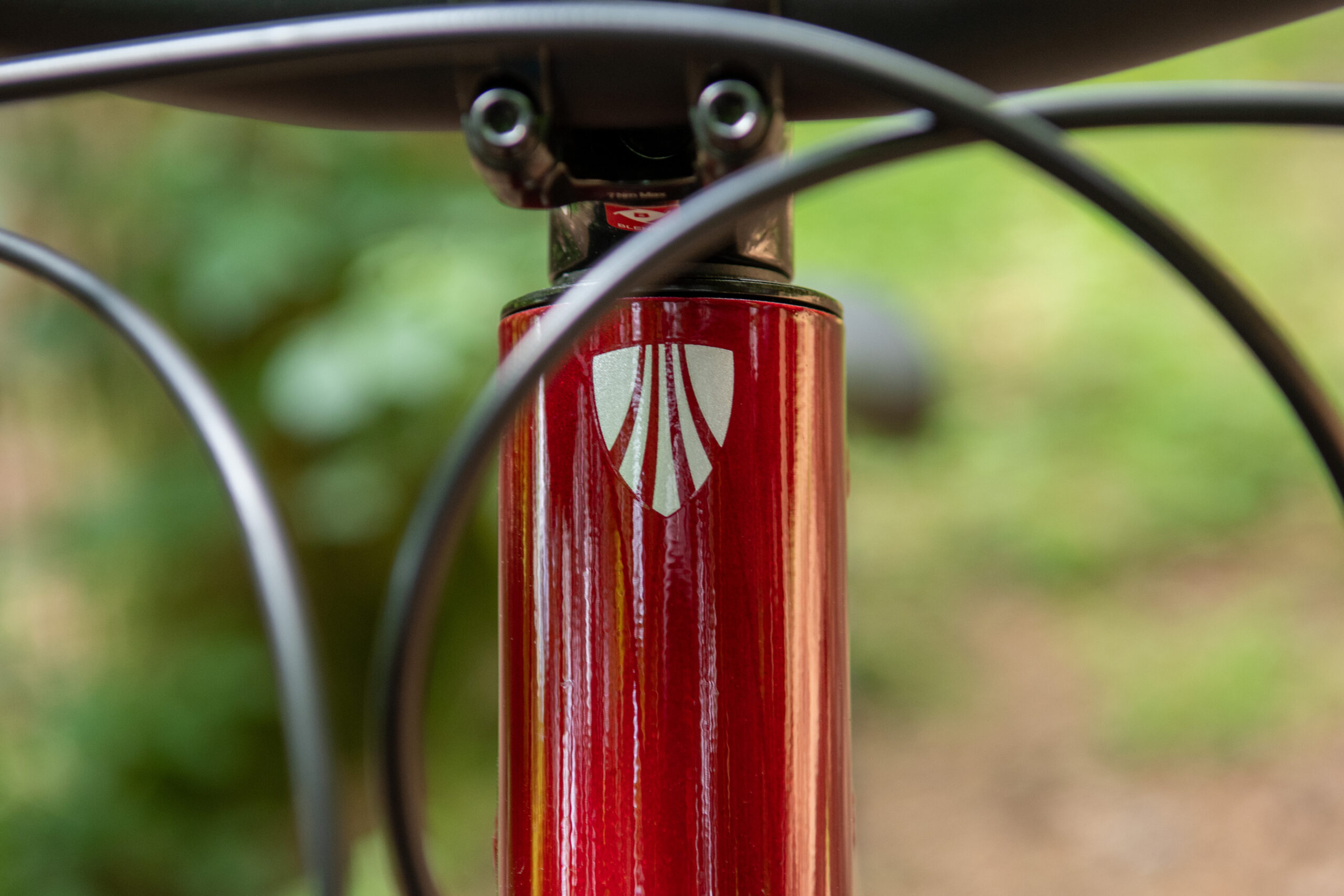
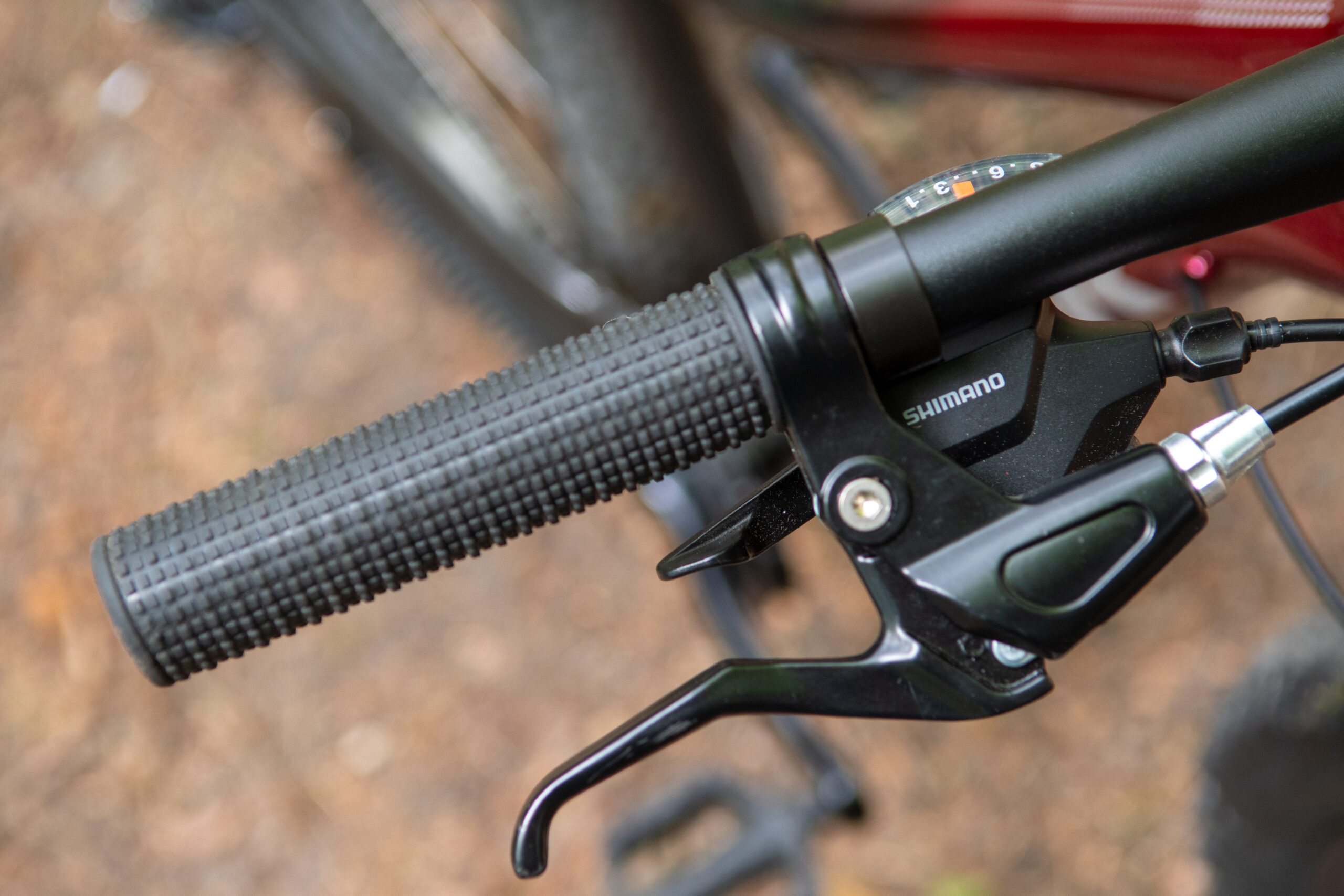
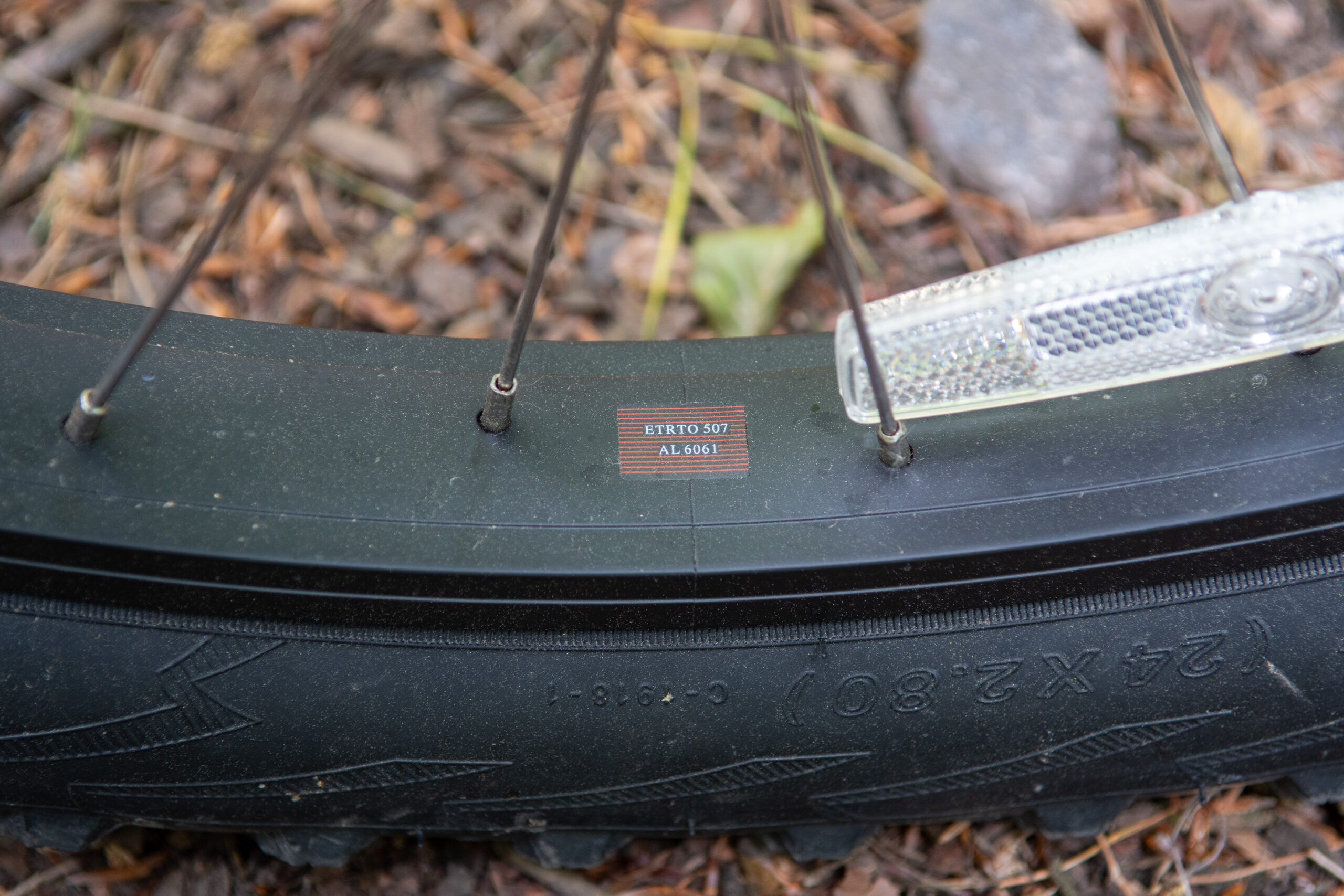
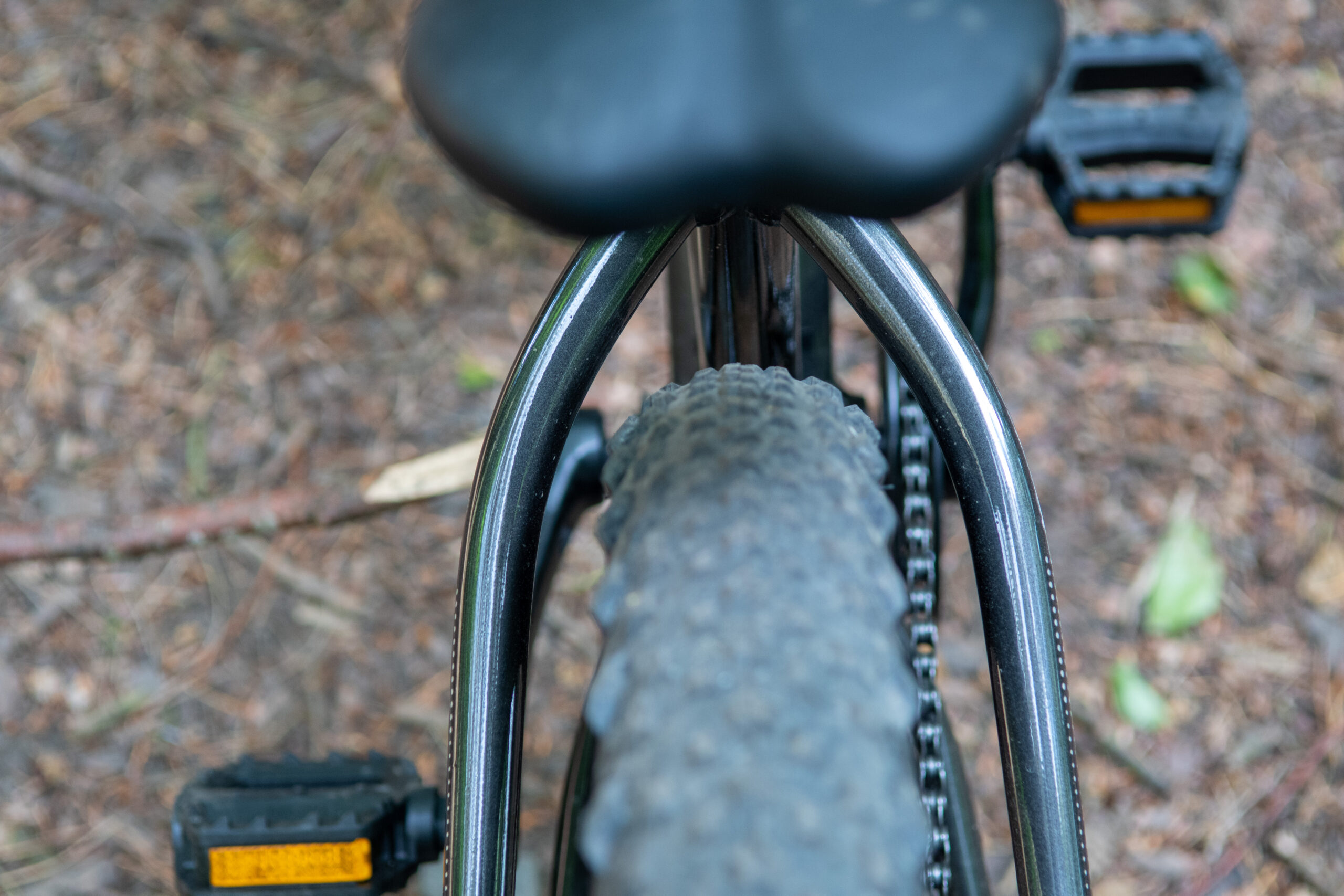
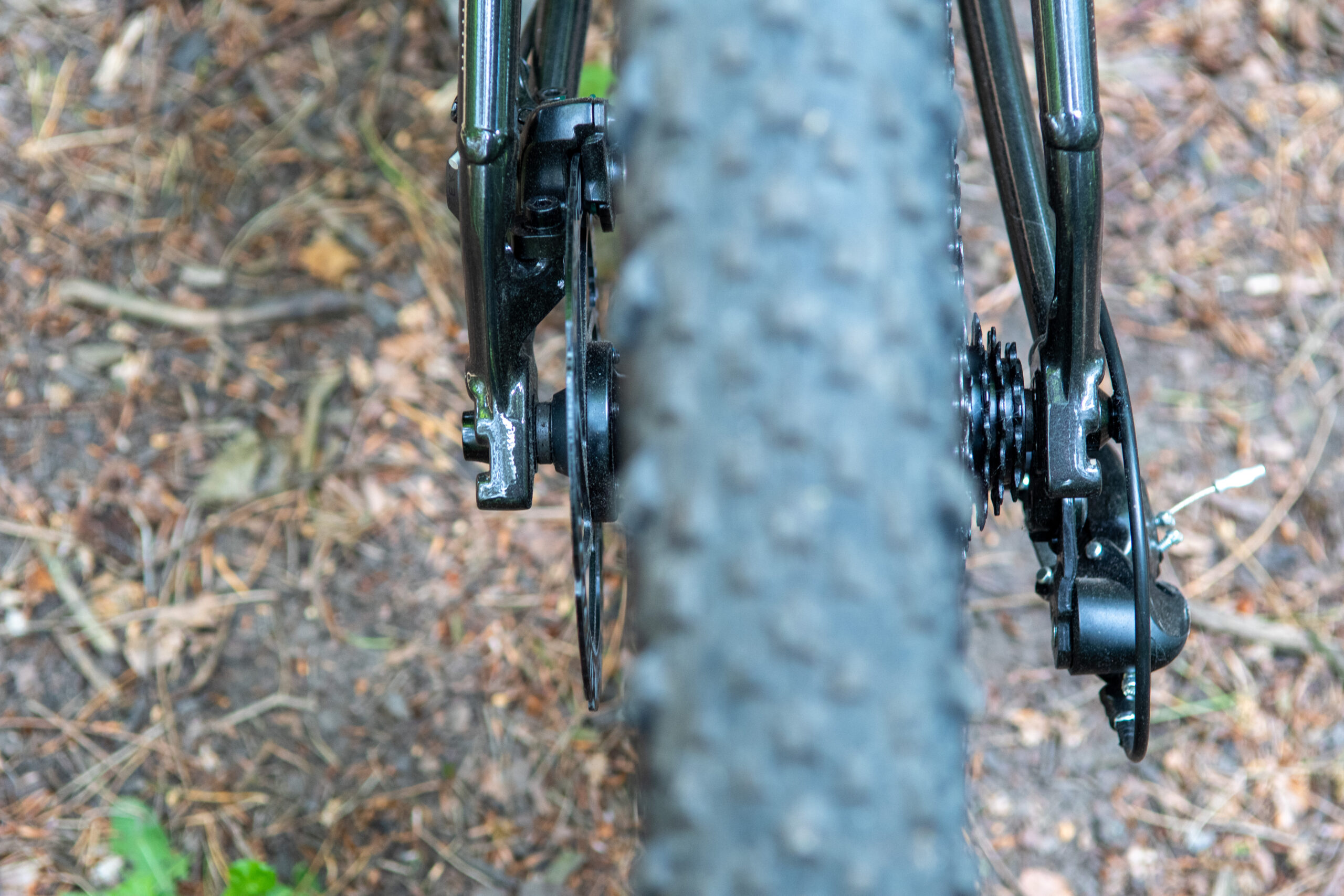
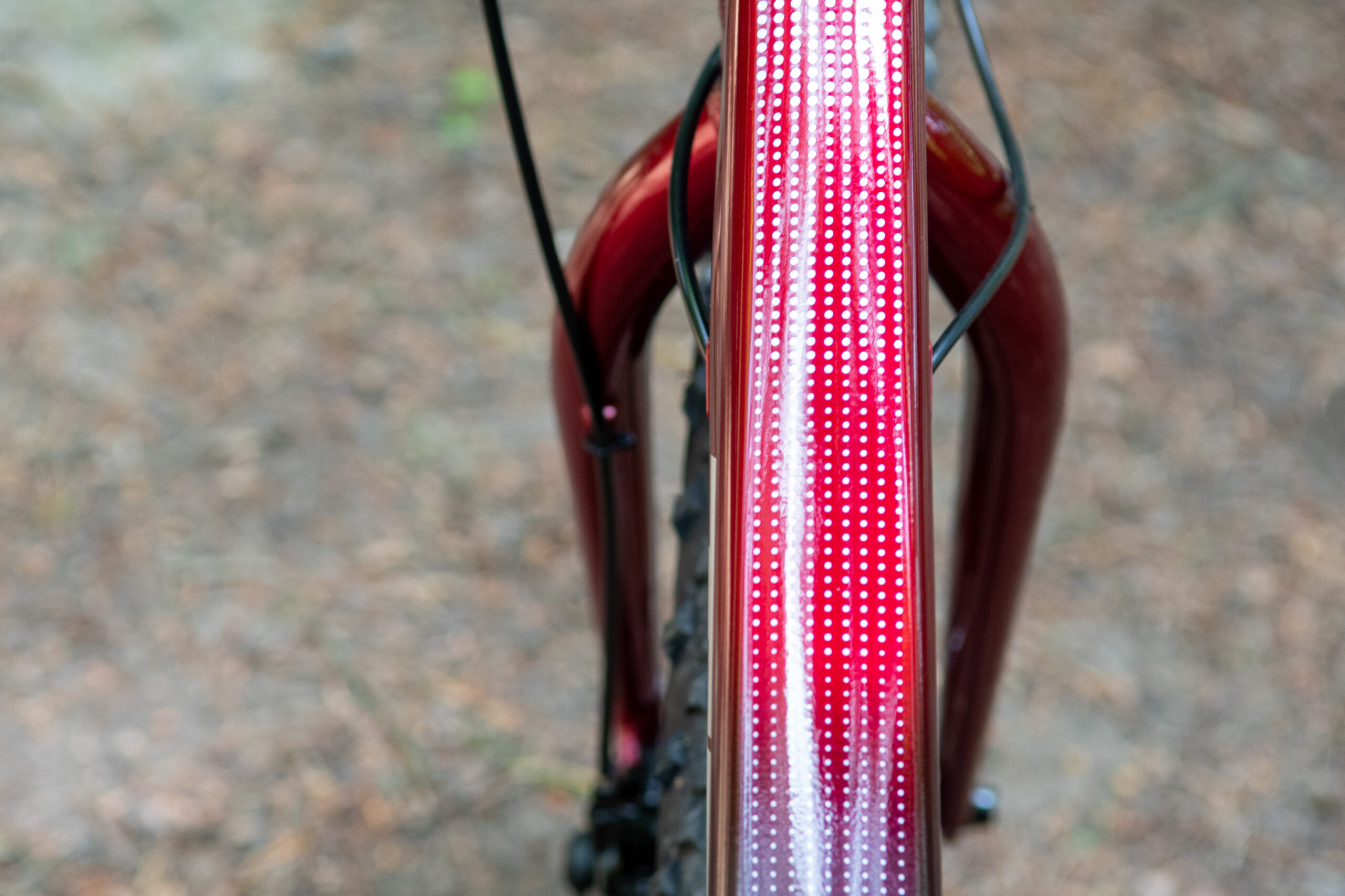
Overall
The Roscoe 24 has superb geometry, probably the best of any kids’ bike I’ve investigated. It’s impossible to overestimate how confidence inspiring a decent geometry can feel to kids when they’re starting out on their MTB journey. Couple this with a great, sure-footed feel and some basic (but perfectly functioning) kit, and you’ve got a great little trail bike that’s only let down by the brakes.
Trek Roscoe 24 Specification
- Frame // Alpha Aluminium
- Fork // Trek Aluminium
- Wheels // Formula hubs (F-100mm, R-141mm QR), 28 spokes, alloy rims
- Front Tyre // Chen Shin 24×2.8
- Rear Tyre // Chen Shin 24×2.8
- Chainset // Alloy 152mm, 28t
- Drivetrain // Sunrise Cassette, Shimano Tourney mech, Altus shifter
- Brakes // Tektro MD-M280
- Stem // Bontrager 60mm
- Bars // Bontrager alloy, 580mm
- Grips // Kids’ Kraton
- Seatpost // Bontrager alloy, 250mm
- Saddle // Kids’ 24” size, padded
- BB // Cup and cone, 73x131mm
- Size Tested // N/A
- Weight // 11.6kg
Geometry of Trek Roscoe 24
- Head angle // 70°
- Effective seat angle // 72°
- Seat tube length // 310mm
- Head tube length // 105mm
- Chainstay // 410mm
- Wheelbase // 985mm
- Effective top tube // 532mm
- BB height // 269mm
- Reach // 355mm
Join our mailing list to receive Singletrack editorial wisdom directly in your inbox.
Each newsletter is headed up by an exclusive editorial from our team and includes stories and news you don’t want to miss.






